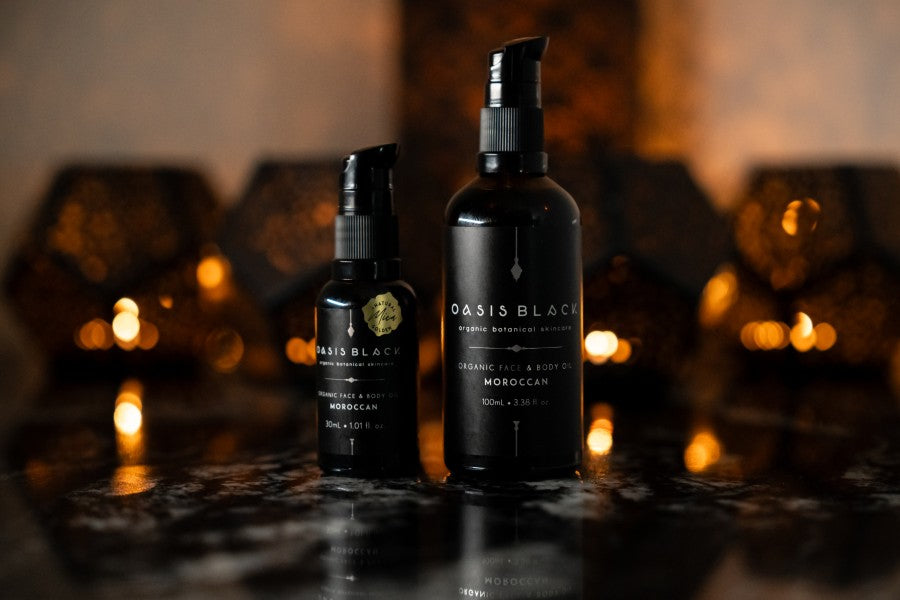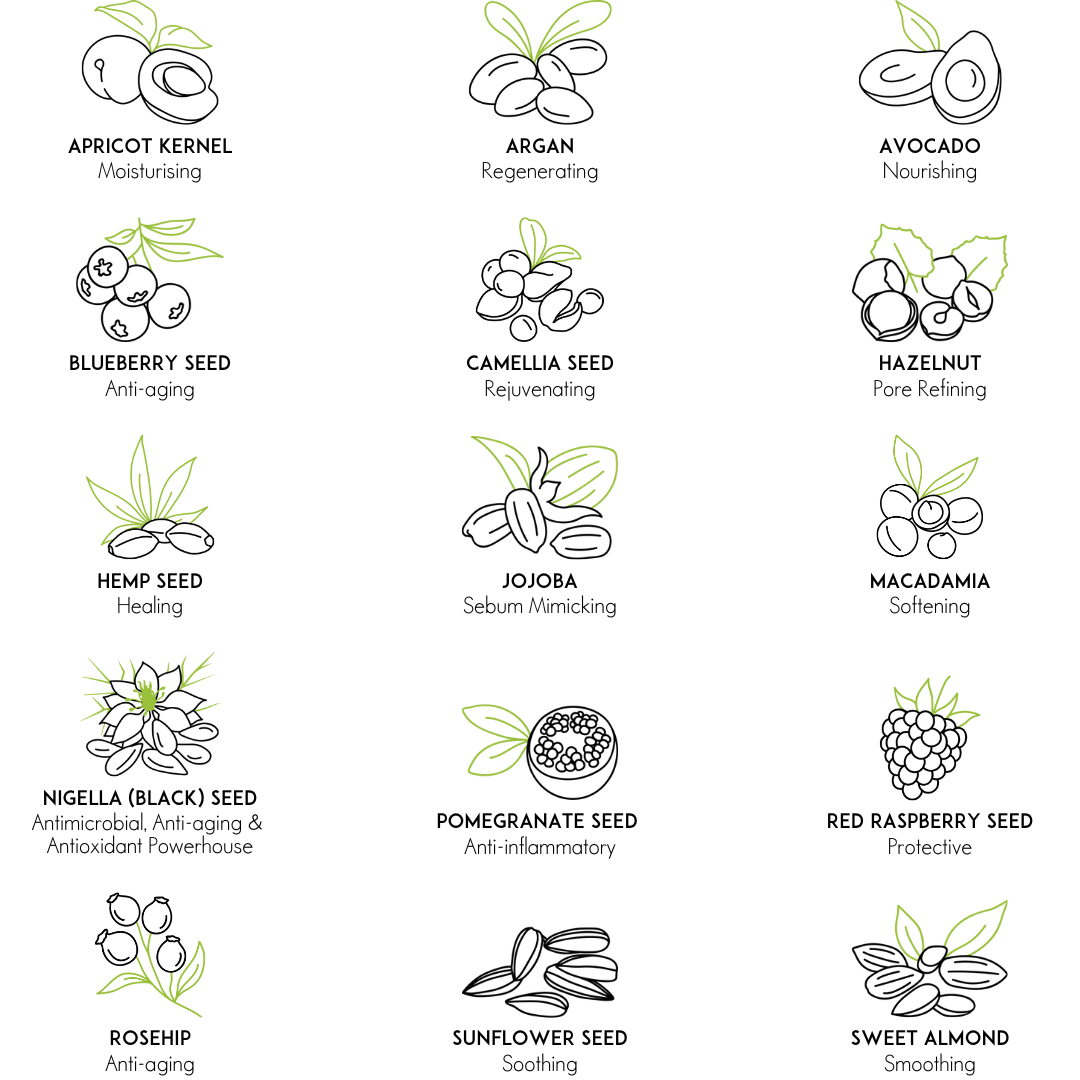
Processing techniques like solvent extraction, heat extraction, deodorising, bleaching & heavy refining are wasteful and unnecessary processes that contaminate, strip away and destroy the most beneficial components of the natural oils & ingredients... leaving them nutrient poor.
Because of this, we seek only lightly filtered (virgin) COLD PRESSED Carrier Oils, and STEAM DISTILLED Essential Oils to ensure the full spectrum of vitamins, minerals, antioxidants and essential fatty acids that the parent nut/seed/plant offers are available for your skin through our products.
Below you'll find a list of the ingredients we use in our products and their main beneficial qualities.






























